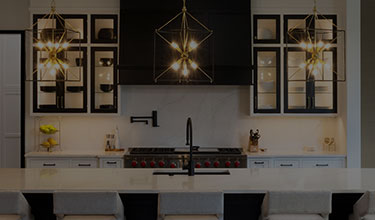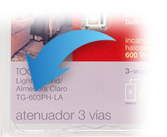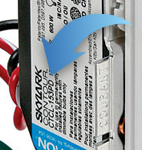
Explore Knowledge Articles
Using Canvas View in Lutron Designer for RadioRA 3 Systems
Canvas View provides Lutron Designer users with a graphical floorplan to perform tasks in the design tab typically done in Classic View:
- Design the layout of the system
- Quickly add and move devices
- Visualize device layout and wireless ranges
- Create a PDF system layout report
Enroll in and complete the RadioRA 3 - Canvas View training (LP 660) at the Lutron Lighting Control Institute (LCI) Online for a video tutorial (myLutron login and LCI registration required). Click the image below to get started:
Adding a Floorplan
Follow the steps below to get started in Canvas View:
- Import the floor plan of your Radio RA3 system.
- Select View > Canvas View from the top navigation pane
- Click Upload floor plan and select your PDF.
When prompted to set the scale of your floor plan, select two points on your floor plan and specify the distance apart they represent. If you need to adjust this later, use the 'S' key shortcut to open the Scale Tool again.
Scale Mode Expanded:
Adding Areas
Creating a New Area
- Select Area in the top right section of the screen to enter Area Mode.
- You can also use the keyboard shortcut by pressing the 'A' key
- Choose the rectangle, ellipses, or polygon tool and outline your area shape to match the boundaries of your floor plan, then name the areas accordingly.
- There are various shortcuts to assist with this such as toggling snapping. Please see the Help > Shortcuts menu for a full list.
Drawing a Floor Plan Shape for an Existing Area
Follow the steps below to add a floor plan shape to an existing area in your project:
- Create your desired area tree in Classic View of the design tab.
- Switch to Canvas View and note the yellow warning icon on the Area Mode button. This indicates the amount of areas in the floor plan without a shape.
Note: When switching from Classic View to Canvas View all existing rooms are located in the equivalent of Floor 1 in Canvas View. If the rooms should be on a different floor, you must drag/drop them within Classic View to the correct floor.
- Draw a shape for an area. A popup appears to inform you how many areas exist but do not yet have floor plan shapes associated with them.
- Expand the dropdown and select the existing area that you’ve drawn to associate it with that area. If the area already contains devices, those devices also appear in the new shape.
Note: Canvas View is only used to draw areas that contain devices and loads. Organizational parent areas cannot be drawn.
|
In the example area tree below, Bedrooms is an organizational area only and cannot be drawn on Canvas View.
Childless areas – including Kitchen, Living Room, Primary Bedroom, Guest Bedroom #1, and Guest Bedroom #2 – can all be drawn on the floor plan.
To use organizational areas, add them in Classic View, and then return to Canvas View to draw your shapes. |
Adding Devices
Load Controls
Canvas View allows users to accomplish tasks normally done in the Design > Controls and Design > Equipment tabs of Classic View. All available Controls and Equipment can be added to the Device palette of Canvas View.
Follow the steps below to add a device in Canvas View:
- Click the “+” icon in the Devices palette.
- Search for your desired device in the Toolbox. Select Add Device to add it to the Devices palette.
- Drag a device from the Devices palette and drop it onto the floorplan to stamp the device.
Note: Use the keyboard shortcut "CTRL + SHIFT + ." or "CTRL + SHIFT + ," to adjust Floor Plan transparency. This can make devices easier to see.
Note: When a load controller (such as a dimmer or switch) is stamped, a load is automatically added in the background. To change the name or location of this zone, double-click on the load controller.
Smart Lights
This section details how to use Canvas View to accomplish tasks normally done on the Design > Smart Lights tab of Classic View. All available smart lights will be visible in the Smart Lights palette.
To add a smart light, select the desired device from the Smart Lights palette and stamp (drag and drop) it onto the floorplan. The device is automatically assigned to a Clear Connect Type X link (processor assignment follows the same rules as Classic View).
To view a smart light’s properties, or to use the Tape Design Assistant, double-click the light or right-click and select Edit Properties.
Assigning Devices
Like in Classic View, all devices are automatically assigned to a processor by default. This section details how to tell which processor a device is assigned to and how to reassign it to a different processor.
Clear Connect Type X (CCX) Devices
Each RadioRA 3 Processor includes a designated “CCX” label and is color-coded based on the processor’s RF channel.
When a device is assigned to the CCX link of this processor, a matching label is added to the device’s icon.
Because the pink keypad icon has the same green “CCX1” label as the processor, we know that these keypads are assigned to that processor’s CCX link.
To change which processor devices are assigned to, select the devices, right-click, and select “Remove Clear Connect Type X Connections” to unassign them. Next, enter Connect Mode, select the devices again, then select the desired processor.
Clear Connect Type A (CCA) Devices
When a device is assigned on the Clear Connect Type A link of a RadioRA 3 Processor, a dotted blue line appears between that device and the processor.
To change which processor devices are assigned to, select the devices, right-click, and select “Remove Clear Connect Type A Connections” to unassign them. Next, enter Connect Mode, select the devices again, then select the desired processor.
Unassigned Devices
A yellow warning icon on the Connect Mode button indicates devices in the project that are not linked.
Cycle through the unassigned devices by repeatedly clicking the Connect Mode button’s yellow icon. When all devices are assigned, the yellow warning icon disappears.
Note: You can also use the 'C' key to enter Connect Mode.
Navigating the Floorplan
Use the search bar at the top of Canvas View to easily navigate the floor plan. To navigate to an area immediately, type the area name in the search bar and select it from the list. Canvas View immediately zooms and pans to the selected area.
Note: Various shortcuts exist to assist in navigation, such as F12 to reset your zoom to 100%. To see a full list of these shortcuts, use the Help > Shortcuts option at the top of Designer.


